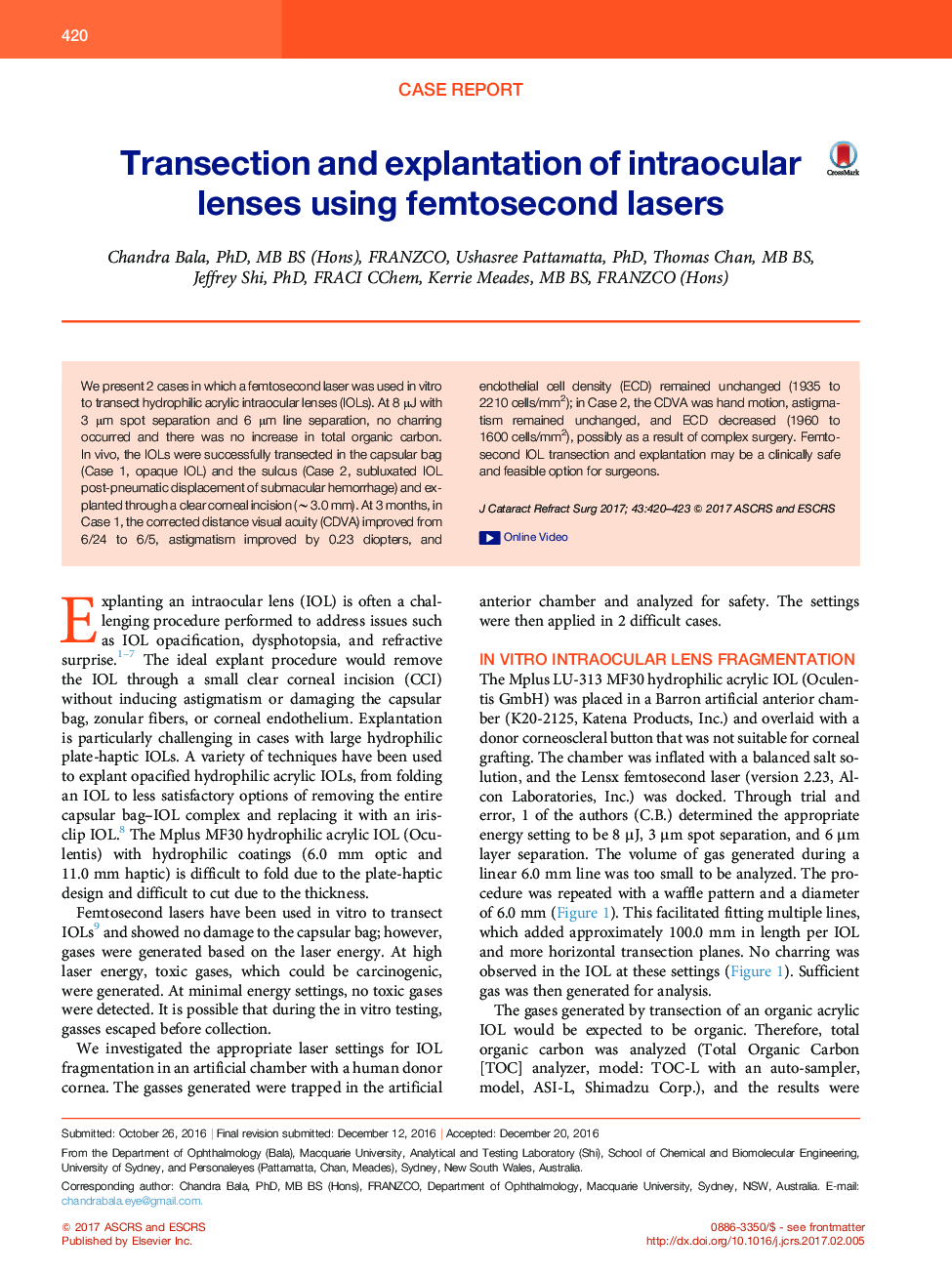| Article ID | Journal | Published Year | Pages | File Type |
|---|---|---|---|---|
| 5704545 | Journal of Cataract & Refractive Surgery | 2017 | 4 Pages |
Abstract
We present 2 cases in which a femtosecond laser was used in vitro to transect hydrophilic acrylic intraocular lenses (IOLs). At 8 μJ with 3 μm spot separation and 6 μm line separation, no charring occurred and there was no increase in total organic carbon. In vivo, the IOLs were successfully transected in the capsular bag (Case 1, opaque IOL) and the sulcus (Case 2, subluxated IOL post-pneumatic displacement of submacular hemorrhage) and explanted through a clear corneal incision (â¼3.0 mm). At 3 months, in Case 1, the corrected distance visual acuity (CDVA) improved from 6/24 to 6/5, astigmatism improved by 0.23 diopters, and endothelial cell density (ECD) remained unchanged (1935 to 2210 cells/mm2); in Case 2, the CDVA was hand motion, astigmatism remained unchanged, and ECD decreased (1960 to 1600 cells/mm2), possibly as a result of complex surgery. Femtosecond IOL transection and explantation may be a clinically safe and feasible option for surgeons.
Related Topics
Health Sciences
Medicine and Dentistry
Ophthalmology
Authors
Chandra PhD, MB BS (Hons), FRANZCO, Ushasree PhD, Thomas MB BS, Jeffrey PhD, FRACI CChem, Kerrie MB BS, FRANZCO (Hons),
